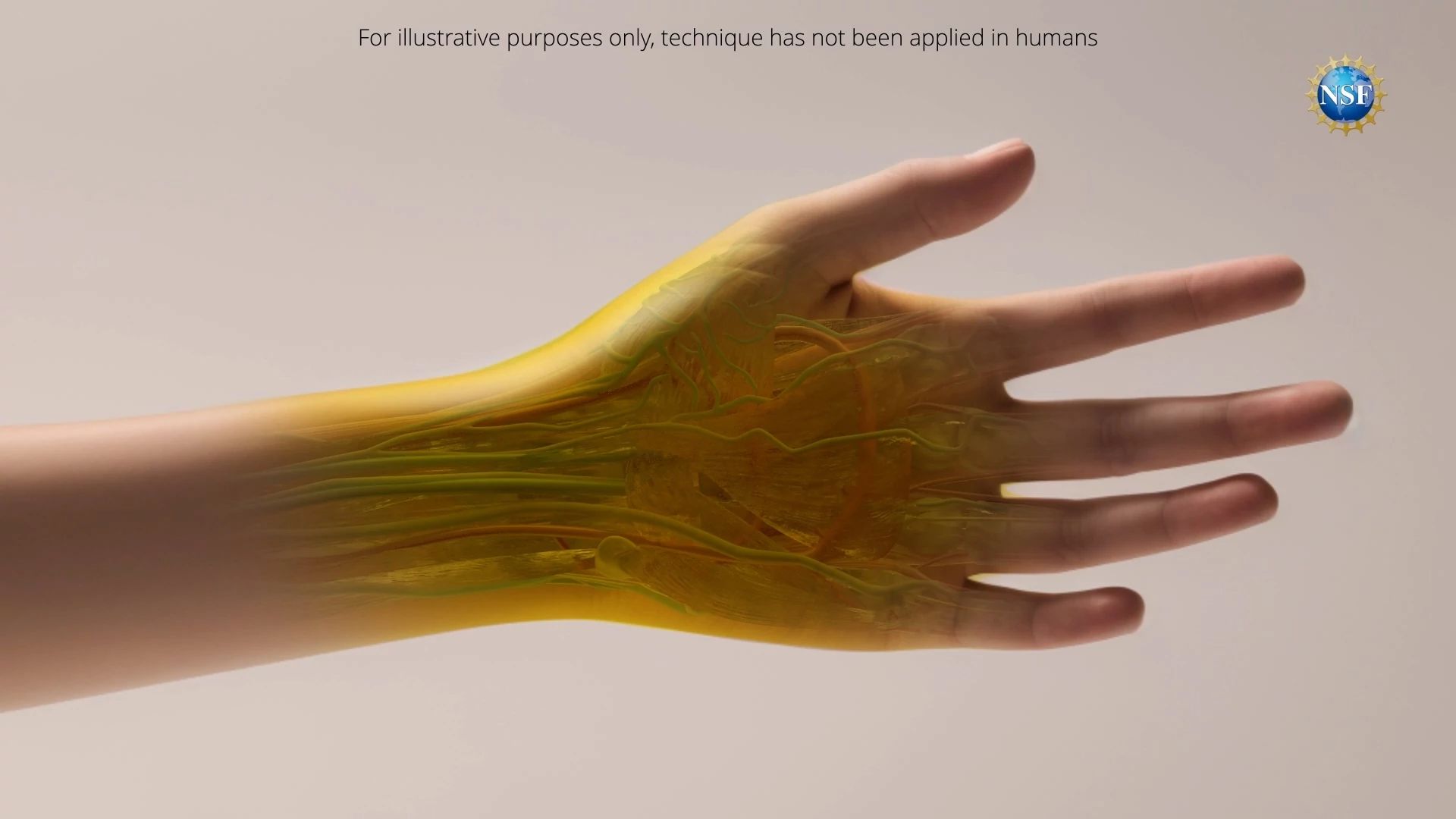Negative
24Serious
Neutral
Optimistic
Positive
- Total News Sources
- 1
- Left
- 0
- Center
- 1
- Right
- 0
- Unrated
- 0
- Last Updated
- 286 days ago
- Bias Distribution
- 100% Center


Stanford Researchers Develop Transparent Tissue Technique
Researchers at Stanford University have developed a groundbreaking technique that utilizes a food-safe dye called tartrazine to make skin and other tissues transparent, enabling visibility of underlying organs and blood vessels. This reversible method significantly reduces light scattering, which normally prevents us from seeing through biological tissues. The study, published in the journal Science, demonstrated the dye's efficacy on thin slices of chicken and live mice, allowing researchers to observe organ movement and blood flow. The technique holds promise for various medical applications, including improved visibility for blood draws, simplified tattoo removal, and enhanced cancer detection. While the current tests have been conducted on mice, researchers suggest potential applicability in humans, albeit with challenges due to thicker skin. Overall, this advancement could revolutionize internal medicine and diagnostics.

- Total News Sources
- 1
- Left
- 0
- Center
- 1
- Right
- 0
- Unrated
- 0
- Last Updated
- 286 days ago
- Bias Distribution
- 100% Center
Negative
24Serious
Neutral
Optimistic
Positive
Stay in the know
Get the latest news, exclusive insights, and curated content delivered straight to your inbox.

Gift Subscriptions
The perfect gift for understanding
news from all angles.
